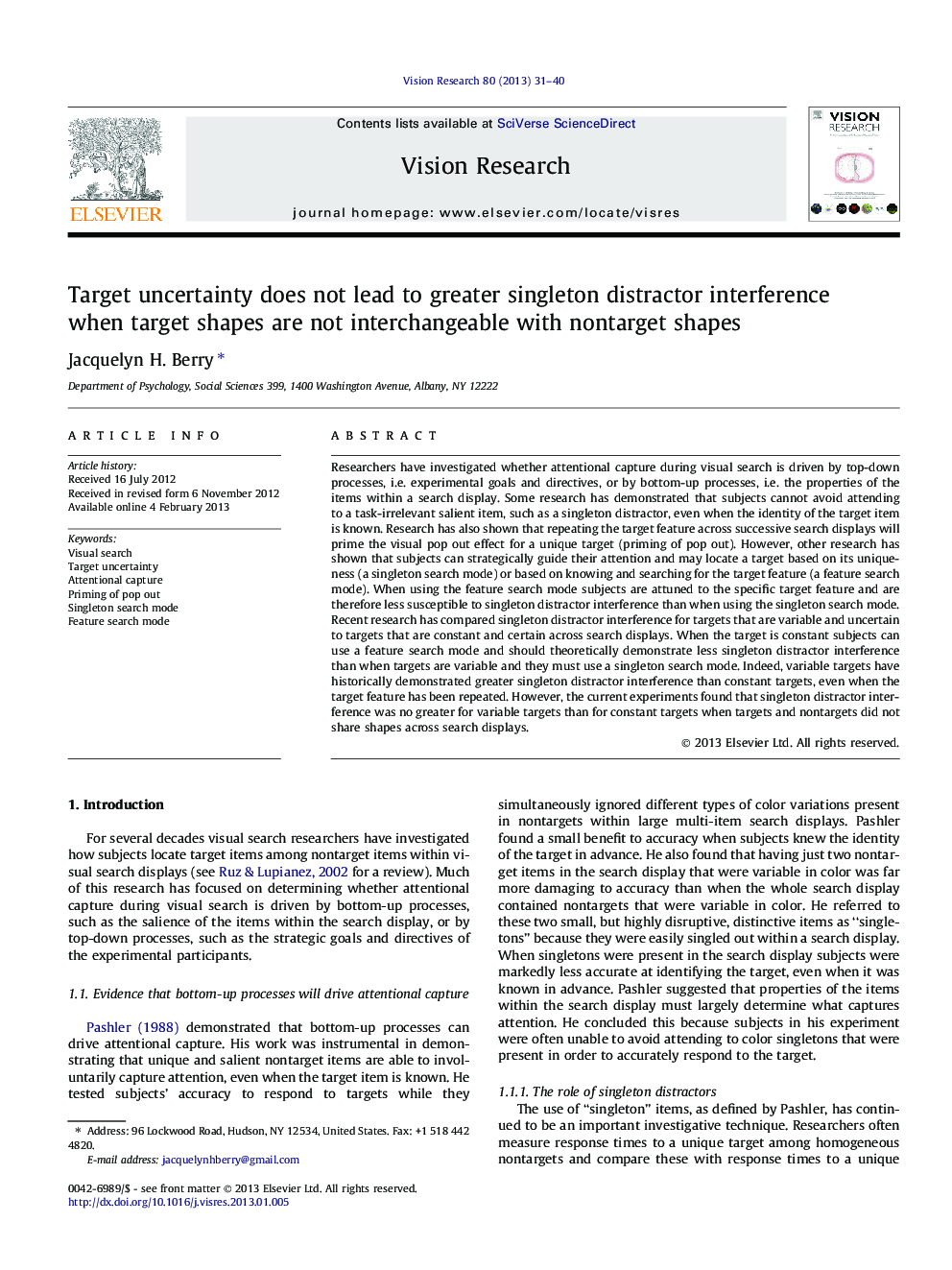| Article ID | Journal | Published Year | Pages | File Type |
|---|---|---|---|---|
| 4033770 | Vision Research | 2013 | 10 Pages |
Researchers have investigated whether attentional capture during visual search is driven by top-down processes, i.e. experimental goals and directives, or by bottom-up processes, i.e. the properties of the items within a search display. Some research has demonstrated that subjects cannot avoid attending to a task-irrelevant salient item, such as a singleton distractor, even when the identity of the target item is known. Research has also shown that repeating the target feature across successive search displays will prime the visual pop out effect for a unique target (priming of pop out). However, other research has shown that subjects can strategically guide their attention and may locate a target based on its uniqueness (a singleton search mode) or based on knowing and searching for the target feature (a feature search mode). When using the feature search mode subjects are attuned to the specific target feature and are therefore less susceptible to singleton distractor interference than when using the singleton search mode. Recent research has compared singleton distractor interference for targets that are variable and uncertain to targets that are constant and certain across search displays. When the target is constant subjects can use a feature search mode and should theoretically demonstrate less singleton distractor interference than when targets are variable and they must use a singleton search mode. Indeed, variable targets have historically demonstrated greater singleton distractor interference than constant targets, even when the target feature has been repeated. However, the current experiments found that singleton distractor interference was no greater for variable targets than for constant targets when targets and nontargets did not share shapes across search displays.
► Target uncertainty does not lead to greater singleton distractor interference. ► Distractor interference was equal for constant and variable targets. ► Distractor interference was equal for repeated and nonrepeated variable targets. ► Certain variable targets had higher reaction times than constant targets.
